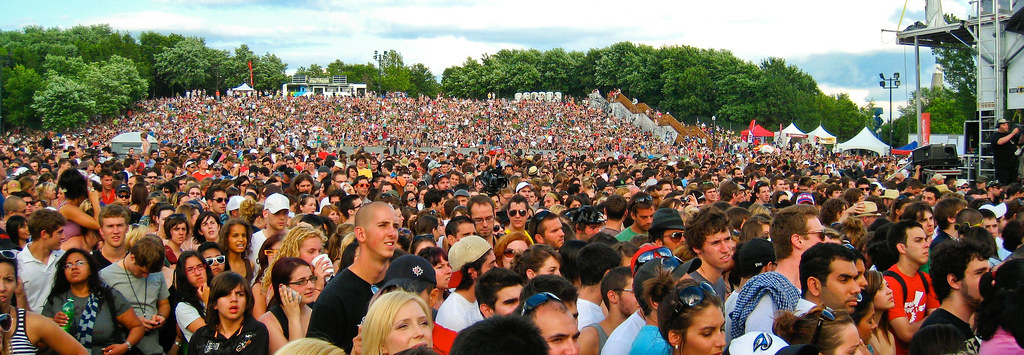Regardless of what comprises an academic’s workload, there is never a shortage of opportunities to stand in front of a group of people and pontificate on subjects near and dear to the speaker’s heart. Didactic lecturing is one such example, but, unless this is a particularly prestigious and high-profile lecture (or possibly part of a job interview), this sort of activity seldom causes most academics to even break a sweat.

Presenting a research paper, delivering a keynote address, now these are things that can strike terror into the hearts of even the most seasoned educators and researchers. I can think of two particular events in my past that have probably helped to form the presenter I have become.
The first event occurred in the initial month of my PhD studies at the University of Waterloo. I had completed my Master’s degree at the University of Windsor just three or four months prior to this and had had an abstract from my thesis accepted for presentation at the Canadian Society for Biomechanics annual conference in Kingston, ON. I had my slides made up before I left Windsor, this being back in the days before PowerPoint when presenters had physical slides and used carousel projectors. I also had dutifully used index cards to carefully map out my 12-min of fame – one card per slide. In the quiet of my home, the talk went perfectly, ending precisely at the 12-min mark, leaving 3-min for questions. And, I had a couple extra cards to handle any tough questions. I was ready!
My talk was the first one after the morning coffee break, but I was too nervous to consider holding a coffee cup, so I stood to the side, re-visiting my index cards. I went into the lecture room early, to make sure all was ready for my talk, when the first of two ‘hiccups’ happened. As it turned out, the moderator for my session was a well-known author and researcher, and one of two researchers’ work that I was criticizing in my presentation – in fact, part of the rationale for my study was the fact that she had got it wrong in one of her previously published papers. Now, this was unexpected!
The second ‘hiccup’ was that I discovered through this talk that it is one thing to sit quietly in your home rehearsing a 12-min, 10-slide presentation all alone; and it is an entirely different thing to give the same talk in a room of strangers, i.e., well-informed strangers, including someone to whom you had planned on giving some stern criticism.

So, off I went. Blah, blah, blah. Click. Blah, blah, blah. Click. And so on. Finally, I finished with a “And I’d be happy to answer any questions”, followed by polite, if muted, applause. Then complete silence. To her credit, the moderator asked a fairly easy question, ignoring completely the negative things I had just said about her research. After giving my answer, she said the words that still echo in my head: “Well, since we still have 10-minutes until the next speaker, I imagine there is still some coffee left out in the hallway if anyone would like to have some. Please be back here at 11:15.”
All my planning, all my rehearsing, and it came down to this: a 12-min talk delivered in 4-minutes by an obvious amateur. Needless to say, I took advantage of the opportunity to get some coffee, only I did not return to this room, opting for whatever was happening in the other lecture room. The rest of the conference was a complete blur – no, less than a blur – it’s a blank place in my memory. I don’t even remember how I got back to Waterloo. Not my finest hour.
And it has affected my preparation for every single lecture or talk I have given ever since in that I never rehearse. Of course, as I create my slides, I am thinking about what I will say for each slide, but once I have the number of slides I deem necessary (about 1 slide per 2-min of the talk plus a title and any references and/or acknowledgements), I never attempt any practice versions. When I attended my first international conference in Sweden in the second last year of my PhD, and my fellow PhD students heard I wouldn’t be rehearsing, I suspect they all came to watch, not out of solidarity or to give support, but to watch me fall flat on my face. They would leave disappointed, as I gave a flawless talk that ended precisely on time. And, this time, I was asked several good questions that I handled expertly.

The second event that I remember that has affected my approach to presentations occurred in between the two talks I mentioned previously. The University of Waterloo hosted an international conference (in fact, the same society as the one to later happen in Sweden), and we graduate students here only too happy to be pressed into service as session aides, assisting the moderators with timing the talks, helping speakers with the lapel microphones, and so forth. I worked a few sessions and was thrilled to be close to researchers that I had only read about or whose work we had studied. Being at the front of the auditorium, so close to the speakers, I could not help but notice just how nervous many of these people seemed to be. I could see hands shaking, sweat on the brow of some, and even witnessed first hand how a seemingly simple thing as a laser pointer absolutely confused people who probably had IQs in the stratosphere. And, I remember thinking to myself, if someone like Professor Emeritus Joe Schmo can get this nervous, who am I to worry about any little gaffs or mistakes that I might make?
So, you may ask, do I get nervous now, some 30-years later, when I give talks? Darn right I do? Do I still refuse to rehearse? Yup, guilty as charged. So what’s my secret? Well, one thing I DON’T do is imagine my audience naked (shudder)! I just remind myself that what I have to say is important, perhaps only to me, but important nevertheless. And even if most of them are there because the next speaker is going to be really interesting, I know that once I get past the first sentence or two, everything will calm down inside my head, my heart will stop beating so hard, I’ll find two or three faces in the audience who seem to be listening to me, and I will tell them my story.






